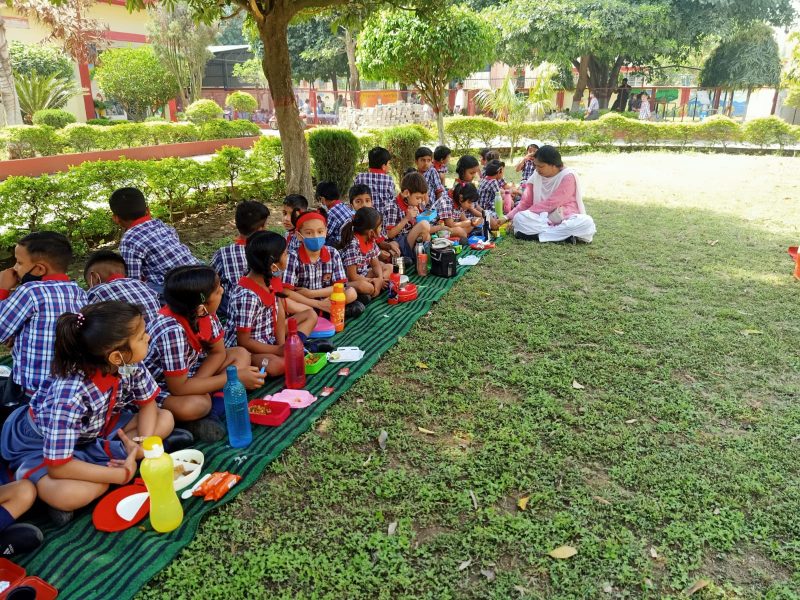
Transfers fears, slow growth spark teacher crunch in Kendriya Vidyalayas
There are 12,044 vacancies in teaching posts across 1,247 KVs in the country; while the government has not made recruitments in three years, several teachers have left their jobs, disgruntled with the long hours and the transfer and promotion policies

The country is grappling with a severe job crisis, with the unemployment rate (as per 2021 data) hovering at 5.98 per cent. Yet, thousands of teaching posts lie vacant in Central government-run institutions including the Kendriya Vidyalayas (KVs).
Also known as Central Schools, enrollment to KVs is exclusively reserved for wards of Central government employees including defence and paramilitary personnel.
According to data furnished by the Union Education Ministry in the Lok Sabha recently, 1,247 KVs across the country have 12,044 vacancies in teaching posts with the latest round of recruitment having been made in 2019. Tamil Nadu accounts for the highest number of vacancies with 1,162 vacant posts, followed by Madhya Pradesh (1,066), Karnataka (1,006), West Bengal (964) and Odisha (886).
Also read: Over 12,000 Kendriya Vidyalaya teaching posts lying vacant: Govt
In contrast, the number of teaching vacancies in 2019 was 5,562. While presenting the data in Parliament, Minister of State for Education Annapurna Devi said that at least 9,161 contractual teachers have been recruited to make up for the lack of regular teachers in KVs.
Principals juggle twin-shifts
While the government claims that the filling of vacancies is a continuous process and all efforts are being made to address the gap, aspirants say no vacancies have been advertised in the last two years.
A report in The Hindu said that over 40 per cent of KVs do not have a principal, while the teaching staff crunch has more than doubled in the past three years as no hiring has been done. Of the 1,247 KVs across the country, 250 are Grade 2 schools which do not need a principal and are headed by a vice principal, while 420 of the remaining 997 KVs don’t have a principal, the report says.
With at least 70 KVs working in two shifts, while there are separate groups of teachers and non-teaching staff for each shift, principals told The Hindu that they enjoyed no such luxury and were “forced” to juggle both shifts at an extra pay of ₹10,000.
‘Cruel transfer policy’
Besides this, they said the institution lacked opportunity for career progression and had a transfer policy where teachers were sent for five to seven years to locations outside their home state.
Reports say that several principals posted in schools in the North-East, Jammu & Kashmir and Himachal Pradesh had to move court after spending an extended posting of five to seven years instead of the customary three-year and two-year terms meant for Central government employees. They rued that despite doing the government’s bidding and serving in remote locations, they were not given a choice to pick their next location of posting.
A KV teacher The Federal spoke to said the issue of far-flung posting is responsible for the migration of several teachers in the Delhi-NCR region to Delhi government schools, where there is no fear of transfer.
With at least 1,300 non-teaching posts lying vacant across KVs in India, principals have complained that they end up doing clerical tasks, too.
Pointing to the high number of vacancies, the teacher The Federal spoke to said more vacancies were created when several teachers either took voluntary retirement or switched to schools with safer prospects during the COVID pandemic.
“A lot of teachers opted for VRS (voluntary retirement scheme) during the pandemic as work from home – which came with new software and changed quite frequently – did not suit them. They missed the classroom teaching where students could be seen, whether they were studying or not,” the KV teacher said.
Several teachers have also put in their papers due to the promotion policy of the Central government for KV staff.
“In Delhi schools, promotion to the next scale is time bound – every 10 years. In KVs, the first scale up is after 12 years, which most get, but the next one, i.e. after 24 years, is delayed. Many have not got it even after being eligible for four to five years. Some got it after an eight-year delay,” the teacher told The Federal.
“Also, Delhi teachers get medical coverage under DGHS (Delhi Government Health Scheme) on the lines of CGHS. But KV teachers do not get the same,” the teacher added.
Slump in school performance
The staff crunch has affected academics, pulling down the overall performance of KVs in board examinations. This year, the institution lost its winner’s title to Jawahar Navodaya Vidyalayas after recording a pass percentage of 97 per cent for Class XII board examinations, compared to the 98.54 per cent it scored in 2019. It also dropped from Number 1 to Number 3 with regard to Class X board exams this year.
Also read: Kendriya Vidyalaya admissions: Centre scraps MP quota, issues revised norms
The staff crunch is a concern especially in view of a 13 per cent rise in student enrolment rate in KVs in four years – from 12.2 lakh in 2017 to 13.8 lakh in 2021, as per the KVS Annual Report.
What the government says
A KV Sangathan official told The Hindu that more recruitments will be made during the ongoing academic year, adding that the same couldn’t be done during the pandemic as it is a specialised exam which requires a combination of written exam, interview and skill test for applicants.
“Filling up of vacancies is a continuous process and efforts are made to fill the vacancies as per the provisions of the relevant recruitment rules. Teachers are also engaged on a contractual basis for temporary duration by Kendriya Vidyalaya Sangathan to ensure that the teaching-learning process is not hampered,” Minister of State for Education Annapurna Devi had told Parliament last month.


